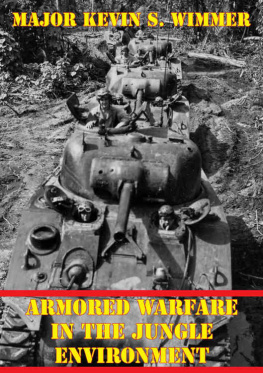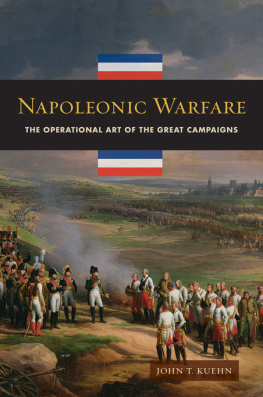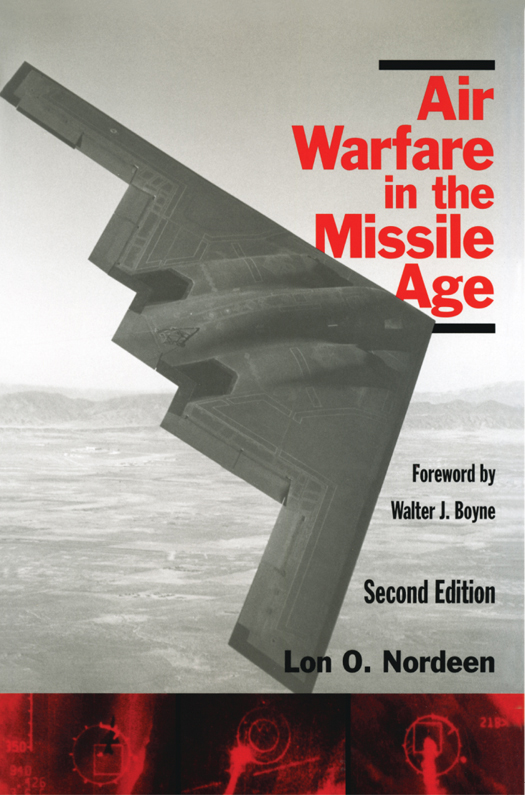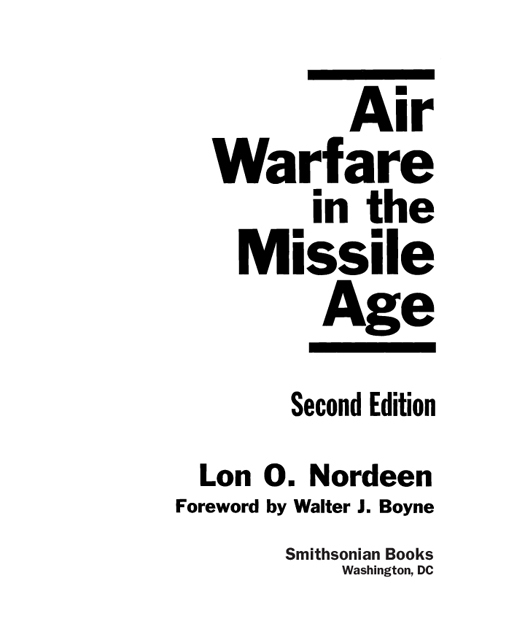2002, 2010 by the Smithsonian Institution.
All rights reserved
Production editor: Robert A. Poarch
Library of Congress Cataloging-in-Publication Data
Nordeen, Lon O., 1953
Air warfare in the missile age / Lon O. Nordeen; foreword by Walter J. Boyne.2nd ed.
p. cm.
Includes bibliographical references.
ISBN 978-1-58834-083-2 (cloth)
eBook ISBN: 978-1-58834-439-7
1. Air warfareHistory. 2. Military history, Modern20th century. I. Title.
UG630.N564 2002
358.400904dc21
2001057625
A paperback reissue (ISBN 978-1-58834-282-9) of the original cloth edition.
British Library Cataloguing-in-Publication Data is available.
For permission to reproduce illustrations appearing in this book, please correspond directly with the owners of the work, as listed in the individual captions. Smithsonian Books does not retain reproduction rights for these illustrations individually or maintain a file of addresses for photo sources.
This book may be purchased for education, business, or sales promotional use. For information please write: Special Markets Department, Smithsonian Books, P.O Box 37012, MRC 513, Washington, DC 20013
www.SmithsonianBooks.com
v3.1
Foreword
It is both exciting and comforting to read this book. It is exciting because Lon Nordeens research has come up with first-person accounts of dogfights and air strikes from all around the world. It is comforting because it is immediately obvious that this is an accurate, well-researched work that explains the subtleties of modern air warfare. The author sweeps across the world aviation stage, relating the terrible conflicts that have taken place and applying his technical, political, and journalistic expertise to explain just what distinguished each conflict.
Such expertise is sorely needed, for the last four decades of air warfare witnessed a curious paradox. While there have been relatively few new aircraft introduced, compared to the years of World War II and the decades afterward, an extraordinary number of new weapons and tactics have entered the air warfare arena. One reason for this unusual situation is that aircraft have become so prodigiously expensive that it is necessary to keep them in first-line service for as long as possible to amortize their costs. A second reason is that advances can be made in ancillary elements of a weapons system more swiftly and less expensively than in an aircraft. The result is that sensors and air weapons have begun to dictate the terms of progress, and aircraft have been relegated, in many instances, to serving as a platform from which to fight wars with the most suitable weapon.
Air Warfare in the Missile Age presents a long and discerning look at this development, riveting it to the real world with the detailed accounts of combat. The author uses his long experience and engineering knowledge to interweave the chronology of each war with an intriguing description of the technological developments as they occurred. It is to his credit that his descriptions of weapons, sensors, and the political/military background of conflicts are as interesting as his descriptions of aircraft. In doing so, he makes clear that both missile and aircraft depend in the long run on the training and aggressiveness of the person in the cockpit. One thing comes through in nearly every account: the pilots and crew who fly in combat, no matter under whose flag they fly, are brave and skilled patriots, no less than those who flew in World Wars I and II.
Nordeen makes masterful use of the variations in the themes of conflicts that occurred over the four-decade period that the book covers. For example, we are reminded that in the Vietnam War, the United States was fighting virtually alone in the air and in the court of world opinion. The battle was difficult because of absurd, self-imposed rules of engagement and because pilots often received tactical direction from the White House. In the Persian Gulf War, Kosovo, and Afghanistan, the situation generally improved, for the United States now headed an extensive coalition of nations, and the rules of engagement were much more sensible. Perhaps most important, the conduct of war has increasingly been placed in the hands of commanders in the field.
The later campaigns made use of the technical developments of the Vietnam War, such as precision guided munitions and the suppression of enemy air defenses, but they also had the great advantages of modern satellite, airborne, and computer systems for intelligence, communications, navigation, and meteorology In addition, there were far more capable airborne command-and-control systems. The Persian Gulf War, Kosovo, and operations over Afghanistan were in fact the first aerospace campaigns, and of course, the first in which stealth technologies were introduced on a large scale. They also presaged the widespread use of unmanned air vehicles.
In between Vietnam and the second major air war over Afghanistan, however, there were other fascinating conflicts, including those in the Middle East and on the Indian subcontinent. Although fiercely fought, the wars involving India and Pakistan were restricted in duration and intensity because of the limited resources of those countries. The authors deep knowledge of aircraft and missiles is invaluable here, for many of them would be unfamiliar to the average reader. The photos of Folland Gnats fighting North American Sabres or F-6s (Chinese copies of Soviet MiG-19s) engaging Indian Su-7s are utterly fascinating.
The wars between Israel and the surrounding Arab states grew more ferocious with each succeeding conflict, beginning with the Six-Day War of 1967, and continuing with the relatively unknown War of Attrition (196770), the October War of 1973, and the later wars in Lebanon. These wars, so bitterly fought, are more important to understand today than ever, for the situation in the Middle East continues to be volatile. A close reading of the authors account of the Arab-Israeli battles, sometimes recounted on a day-by-day basis, will give the reader insights that are rarely found elsewhere.
Nordeen also includes fascinating accounts of some air wars that have received less than their share of coverage, including the vicious eight-year war between Iraq and Iran, and the short but bitter MalvinasFalkland Islands conflict. The war between Iraq and Iran was distinguished by a bloodthirsty disregard of all the conventions of war, for both surface-to-surface missiles and poison gas were employed.
Air Warfare in the Missile Age presents an enormous amount of detail interlaced with fast-paced accounts of events. The author is very even-handed in his accounts of these conflicts. This is particularly true of the Middle East wars, where Nordeens intimate knowledge of both Israeli and Arab air forces is evident. This is a book that belongs in every aviation enthusiasts library, one that will serve as a benchmark of accuracy and completeness for years to come.
Walter J. Boyne
Ashburn, Virginia
March 2002
Acknowledgments
The author is indebted to many individuals for their assistance in finding research materials, preparing the manuscript and maps, and collecting the photographs. They include Joseph Bermudez, Shirley Creswell, Rene Francillon, Peter Mersky, Walter J. Boyne, Matt Caffrey, Dr. David Mets, Dr. David Nicolle, Barry Watts, and Steve Zaloga. David Parsons and David Isby deserve special mention for their assistance. Ev Rein of Brickstreet Creative did an excellent job on artwork.











